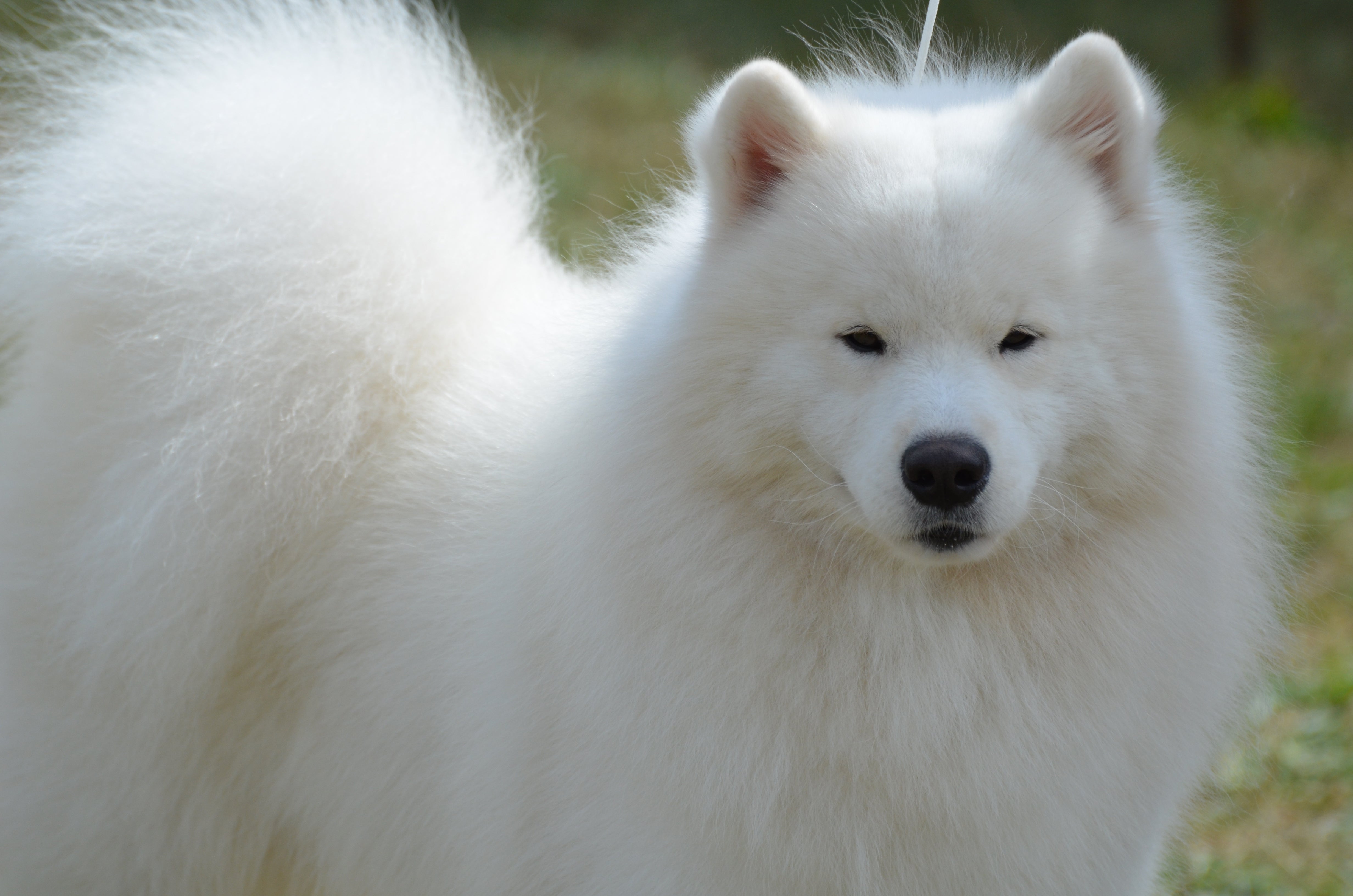American Eskimo Dog
The American Eskimo Dog is a spritely, lively dog that comes in three sizes: Toy, Miniature, and Standard. They have clear and quick minds. They sport an iconic white coat with a mane, making them a one-two punch of beauty and brains. They are friendly and merry dogs that are agile and quick. Social and eager, they love being involved in family life. While they look like Arctic foxes, they are descendants of German Spitz dogs.
Breed characteristics carousel
Learn More
Need to Know
- Dog suitable for owners with some experience
- Extra training required
- Enjoys active walks
- Small and medium dog
- Comes in two sizes, Standard and Toy
- Requires frequent grooming
- Chatty and vocal dog
- Barks and alerts to visitors/anything unusual
- Generally friendly with other dogs
- Gets along with other pets with training
- May need additional supervision to live with children
- Needs a small yard or can happily live in the city
- Can be left alone occasionally with training
- AKC Registered Breed

Personality
The definition of “bright-eyed and bushy-tailed,” the American Eskimo Dog is a fun-loving and easygoing dog. They can be independent and tenacious, though, hinting at their Spitz origins. Calm and polite indoors, they are ready to play and run once outside. Originally bred as watchdogs, they can be reserved around strangers.
The Eskie was bred from Spitz varieties developed in Germany, such as the Keeshond, Pomeranian, and Volpino Italiano. When Europeans immigrated to America, they brought the American Eskimo Dog with them as general farm dogs. They were known for a time as the American Spitz and became circus performers, often going home with audience members to become companion pets. After World War I their name was changed to American Eskimo Dog to remove any German associations.
While they might seem similar, the American Eskimo Dog and the Canadian Eskimo Dog are different dogs. The American Eskimo Dog comes in three sizes, toy, miniature, and standard, while the Canadian Eskimo Dog is a much larger breed. The Canadian Eskimo Dog is an indigenous breed, developed by Inuit people and remains a working dog, whereas the American Eskimo Dog is primarily a companion breed.
The ideal owner of the American Eskimo Dog will know how to deal with a high-energy, smart, and sometimes stubborn dog. They need lots of socialization, attention, and exercise and can be destructive if left alone for too long.
Active and exuberant, the American Eskimo Dog breed is quick and inquisitive, ready to learn and be challenged. A fenced-in yard is ideal for them to get the appropriate exercise and playtime in, and owners will want to be engaged in their stimulation and enrichment.
The American Eskimo Dog comes in three sizes: Toy, Miniature, and Standard, and requires no special space. They do, however, do best with homes that have fenced-in yards where they can romp and play to their heart’s content.
White and fluffy, the coat of the American Eskimo Dog has two layers, a short and dense undercoat and a longer outer coat. Be prepared for shedding if you have an American Eskimo Dog—they shed more than the average pup. Brushing will remove dead and loose hairs before they can shed, helping keep your house and vacuum clean. They should only be bathed occasionally to prevent dry or irritated skin.
Early and ongoing socialization is good for the American Eskimo Dog. They enjoy training, as evidenced by their past history as circus dogs. Eager and clever, they learn quickly and are especially good at trick training. Training is fun for them when owners are engaged and interacting. A bored American Eskimo Dog can be a destructive one, so training is a good way to mentally stimulate them.
The Eskie dog can be a good family companion pet for those who have time and energy to devote to them. They are loyal and trustworthy dogs who love being energetic playmates, but they can also be stubborn. They do best in households that have older or no children.
The cost of an American Eskimo Dog from a breeder is significantly more than the cost of adopting one from a local shelter or rescue. The adoption fee usually covers additional items such as spaying or neutering, vaccines, and microchipping.

Learn more about feeding and caring for your American Eskimo Dog on Purina.
Did You Know?
- The American Eskimo Dog comes in three sizes: Toy, Miniature, and Standard.
- The American Eskimo Dog breed is descended from German Spitz dogs and is not related to the North American Inuit people.

